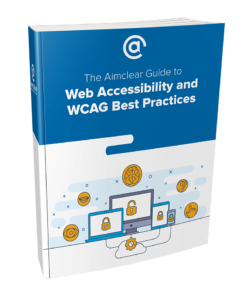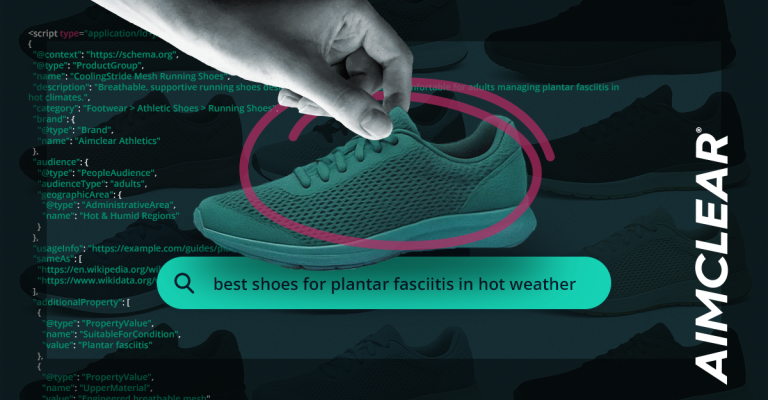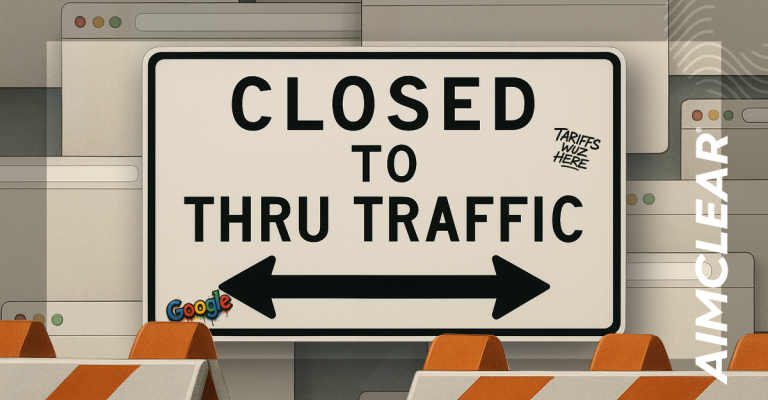At the heart of web accessibility and compliance are all of the fundamentals of SEO and user experience(UX) tasks within development, design, and content creation as described by the World Wide Web Consortium’s (W3C) Web Content Accessibility Guidelines(WCAG).
Many brands either didn’t make the connection between SEO and web accessibility or decided to take their chances with lawsuits and not invest in the time and resources needed to complete basic SEO. Simple things like meta titles and descriptions, alternative text (alt txt), proper headline structure, mobile friendly proper design, providing a quality user experience, and more.
We see brands standing before the daunting task of learning and applying the over one thousand pages of web accessibility requirements to all of their web properties, apps, PDF, images, etc. – everything you make available to your clients and employees online and in-house. We want to help. We developed a The AIMCLEAR Guide to Web Accessibility and WCAG Best Practices to help brands start to organize their thoughts and begin opening up their content, products and services to all potential customers.
What is web accessibility and why is it important?
Web accessibility means ensuring your brand’s online resources – including website, app, tools, and technologies – are designed and developed to work for those with disabilities. Specifically, ensuring that all users can navigate, perceive, understand, and fully utilize the web. Web accessibility encompasses all disabilities whether it be auditory, physical, speech, visual, neurological, or cognitive. Web accessibility done right offers a quality user experience and works with accessibility technologies like digital braille and screen readers; and implements accessibility strategies for all users – including those without disabilities.
Aging Population
Brands should want to be accessible to all users. In our blog post, Website Accessibility: Do The Right Thing or Risk Big we discussed that nearly 20% of U.S. citizens have a disability according to The American Institutes For Research. We expect that number to increase in the 2020 census for a number of reasons, but mainly as a country our population is aging and our older users need larger fonts, buttons, better contrast between fonts and background colors, etc.
The growing risk of Federal ADA website compliance lawsuits
The total number of federal lawsuits for 2019 aren’t in yet. However, by June 2019 the count was nearly fifty-two percent over 2018. Most of the cases filed are brought up through the Americans with Disabilities Act (ADA). The ADA is a federal law and applies to all states. It doesn’t matter if it is a public or private business, the ADA Titles II and III apply to all businesses.
The Market Opportunity
If your brand needs help making the case to ensure web properties are accessible, how about the nearly $500 billion in disposable income that rests in the pockets of those with disabilities in the U.S. alone. Brands that choose to not invest in accessible apps and websites are missing out on potential revenue. It’s that simple.
Accessibility is Fundamental to SEO Best Practices
SEO best practices including meta titles, meta descriptions, alt text, proper headline structure, and quality text links all play their part in web accessibility. The elements that sighted people use to scan through content like headlines (H1s, H2s, etc.) are the same elements people utilizing screen readers use to skip through the content and find what they are looking for. Proper titles, descriptions, headlines, etc. help all users – including and especially those with accessibility needs – understand what a page is about and quickly find the information they need.
Google, Bing and How Accessibility May Impact Search Visibility
At the recent UnGagged LA conference, our VP of Product Innovation Michelle Robbins led a Q&A with representatives from the Google and Bing webmaster and search teams. She specifically asked each if WCAG/ADA Compliance factored into site rankings. They confirmed that their algorithms do not specifically test sites against a WCAG checklist per se. We kind of wish they did – it’d be wildly interesting to see which big brands would drop from the rankings like stones in a pond.
However, because web accessibility standards dovetail with solid SEO best practices, it is safe to assume that accessibility is baked into the algorithms by design if not by intent. And consider the parallels between a screen reader that a site visitor might use, and how the search engines crawl websites themselves. The similarities between how a screen reader “sees” a site, and how the search engine bots “see” a site are many. Web accessibility best practices help search engines understand what your content is about and as a result, may help more users find your content.
How to implement web accessibility?
By making your website accessible for those with disabilities, you make your website work better for everyone. The number of people needing better accessibility is increasing. Likewise increasing are the number of lawsuits against companies that have apps, websites, documents and other technologies that don’t meet ADA website compliance. The customers you could be losing by not being compliant (especially to competitors who are) will likewise negatively impact your revenue potential. It’s also just the right thing to do. Grab our guide to help get you started!










